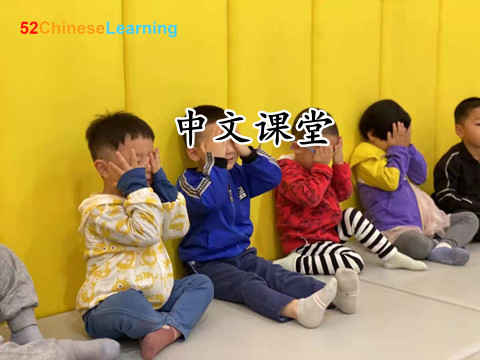Copy link succeeded! Now can share to friends.
What is your first impression of a Chinese class? If you imagine a Chinese class, what picture comes to your mind? Is teaching in the classroom step by step? Perhaps students spell Chinese characters under the teacher’s guidance? Perhaps there’s some truth in that. However, there’s an upward trend in new Chinese classes. They call it the “interesting” Mandarin class. What is the interesting Chinese class like? Let’s take a look at new teaching and methodological innovations in these kinds of classes.
In China, there’s a nursery rhyme that we call “小鼓响咚咚 Drums Knock”. Kindergartens love this song. It is a staple in nursery and kindergarten learning sessions. It is most popular with kindergartens who just entered the school for two months. The song is quite simplistic in nature. It takes children less than ten days to learn this song under minimal frequency. Children only sing this song twice or thrice a week.

This song is the reason why teachers incorporate Chinese ballads in class. We are deeply impressed by children’s quick learning ability. Consequently, teachers began to think about the role of ballads in international Chinese classes, especially in the classes for younger children.
In class, whenever the teacher finishes the first few beats, the students should immediately follow, which can effectively attract students’ attention. It induces participation among the students. Children who have just entered the classroom and are not familiar with the song whisper to their seatmates to teach them the song. In group activities, when they hear the familiar rhythm, they will stretch out their hands to clap and look at the teacher again. The song enables students to involve themselves in class.
This method is not only aimed at students. Teachers also benefit from this practice. It alleviates the embarrassing situation of teachers “screaming at the top of their lungs” to manage classroom discipline.
“丢丢丢手绢,轻轻地放在小朋友的后面……” Presumably, this song will bring back many people’s childhood memories. Our teacher just integrated the game form of “throwing handkerchief” into Chinese class. Children like this kind of activity very much. It seems like they are enjoying themselves ecstatically. they often laugh unconsciously with their parents Seeing such scenes, they all took out their mobile phones and took photos to record this precious moment.
Chinese children’s songs contain the fun and memories of Chinese children’s childhood. As long as the familiar is familiar with the melody they can recite the lyrics. For this reason, when teaching Chinese to young children overseas, we can fully explore the elements of Chinese children’s songs and integrate them into the Chinese classroom. This can not only cultivate children’s language sense, It can also create childhood memories belonging to “Chinese culture” for them.
Peking Opera, one of the five major operas in China, has a history of more than 200 years. It is the embodiment of Chinese traditional culture.
When the teacher showed the real teaching aid “Peking Opera Mask” in class, the students’ lit up. Some students directly picked up the Facebook and put it on their faces, which caused the whole class to burst into laughter.
First, the teacher briefly introduced the Peking Opera mask to the students. After, the teacher then allowed the students to use their imagination. They asked them to describe their favorite mask, and paint it with their favorite colors. The activity showed the innate creativity of Children. Student Jones painted “rabbit” ears on his mask, while Jack and Lin Dai painted leaves and lotus flowers on the mask on his face. Some students painted colorful eyebrows on their faces.
When the students finished drawing their own faces, the teacher took into account the students’ Chinese level, and he introduced the meaning behind the face colors with simple words.
There are eight kinds of facial makeup colors in Peking Opera. These are the red face, black face, blue face, green face, yellow face, white face, golden face, and silver. Different colors have different meanings and represent different personalities. Generally, red represents loyalty, bravery, and chivalry, and contains praise. Black represents straightforwardness and fortitude. On the other hand, White stands for sinister and treacherous, with derogatory meanings, etc.
Children in western countries love to play much more than they love to learn. It merely goes to show the creativity of the children. After trying simple patterns, they will quickly cut out their respective ideas. In addition to difficult Chinese characters, they may also create a Halloween mask, a Christmas tree, or even cut out a skeleton to wear on their faces.
This kind of inspiration comes from the cultural edification behind the students. Another key influence is their understanding of their own religious festivals that enable children to break the confinement of thinking. Consequently, they create more symbols that can carry Chinese and western cultures. Although the whole British territory is as big as some provinces in China, many children have been to many countries or were born into families of different races. These experiences make them think of more things openly. They are open to all kinds of strange ideas, and all kinds of problems may arise.
Before class ends, we usually reserve ten minutes for children to clean up the debris on the carpet. Especially in the paper-cutting class, paper-cutting can’t avoid small pieces of paper falling on the ground. All the rubbish is cleaned up by the students themselves. What the teacher has to do is ask them to be responsible for their seats. Put all pens and scissors in order, tidy up the chairs, and finally take turns to leave. You can make bold innovations in class, but you must abide by the rules in public places after class.
The different types of Chinese classes shared above are all methods used in offline teaching. So, what is an interesting online Mandarin class? I’ll see you next time.
Your first 1-on-1 Chinese lesson offer